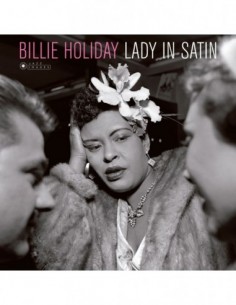Forbidden Fruit
Nina SimoneTHE JEAN-PIERRE LELOIR COLLECTION
INCLUDES 8 BONUS TRACKS
DELUXE PACKAGING – Thick cardboard Fold Open Digi-Sleeves with inner sleeves
"Forbidden Fruit" (Colpix SCP419) was Nina Simone’s second studio album for Colpix. She is showcased here both as a vocalist and as a pianist accompanied by Al Shackman on guitar, Chris White on bass, and Bobby Hamilton on drums. The same rhythm section would back her on live album both prior to and after this 1961 release. Eight tracks from a 1957 studio session have been added here as a bonus.
PERSONNEL:
NINA SIMONE, vocals & piano
AL SHACKMAN, guitar
CHRIS WHITE, bass
BOBBY HAMILTON, drums
New York, 1960-61.
BONUS TRACKS (11-18):
Nina Simone (vc, p), Jimmy Bond (b), Albert “Tootie” Heath (d).
New York, December 1957.
TRACKS:
01 RAGS AND OLD IRON
02 NO GOOD MAN
03 GIN HOUSE BLUES
04 I’LL LOOK AROUND
05 I LOVE TO LOVE
06 WORK SONG
07 WHERE CAN I GO WITHOUT YOU
08 JUST SAY I LOVE HIM
09 MEMPHIS IN JUNE
10 FORBIDDEN FRUIT
11 MY BABY JUST CARES FOR ME
12 GOOD BAIT
13 FOR ALL WE KNOW
14 AFRICAN MAILMAN
15 CENTRAL PARK BLUES
16 PLAIN GOLD RING
17 HE NEEDS ME
18 DON’T SMOKE IN BED
Total Time: 71:22
- Format
- CD
- Discs
- 1
- Label code
- 38026
 Cookie preferences
Cookie preferences




















































